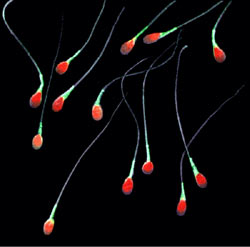Study: Stem Cells Used To Make Sperm, Then Used To Make Mouse Babies For The First Time

For years, scientists have been trying to make viable sperm and eggs cells from embryonic stem cells because it could be a ground breaking treatment for infertility. However, until now all attempts at making sperm from embryonic stem cells had failed to result in offspring. Since 2009, the team from Kyoto University has been working on this problem, and devised a special method for making the cells viable.
The researchers needed a way to coax early embryo cells, called epiblasts, into what are known as primordial germ cells (the cellular precursor to sperm and eggs). The technique they developed used induced signaling of the protein BMP4, which is known to play an active role in the creation of germ cells. For the current research, the scientists made epiblast-like cells using embryonic stem cells, growth factors, and proteins that help the cells grow. Then, they put their BMP4-based method to work to turn the epiblasts into primordial germ cells.
The germ cells were injected into the testes of sterile mice. After some time, the testes were removed, and the researchers found mature sperm. The sperm was collected and used to fertilize mice eggs in vitro. The eggs were then implanted into female mice. The experiment resulted in the birth of 65 healthy mouse babies, where the mice were sexually viable and capable of having their own children.
The research,which was published in the journal Cell, is important because it demonstrates that it is possible to use stem cells to create viable sperm cells. However, the research was only conducted in mice and it has a long way to go before it could ever be translated into humans to help people with infertility problems.
To make the process useful for humans, the researchers want to find a way to make this process work with induced pluripotent stem cells (cells engineered from adult stem cells, not embryonic ones). The mouse research showed some promise in this area, but not nearly the success seen in the embryonic experiment. The researchers would also like to create eggs from stem cells, and develop sperm without having to use the testes.
(via Discover/80 Beats)
Have a tip we should know? tips@themarysue.com